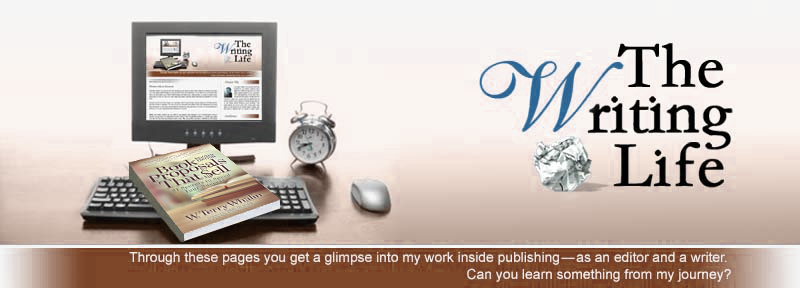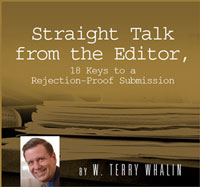Building Your Platform? Don’t Ignore the Old Media
Editor’s note: Recently I read and reviewed You Should Really Write a Book by Regina Brooks and Brenda Lane Richardson. As a part of my commitment to bring you pointed information. I reached out to these authors and got permission to use this fabulous excerpt.
By Regina Brooks and Brenda Lane Richardson
Given that by 2012 the newspaper industry was half as big as it had been seven years earlier, you might be tempted to believe that newspapers are history, but au contraire.
 While an estimated one- third of U.S. newsrooms have disappeared, other companies are continuing to cover their markets— in print and/or online— with fewer reporters while continuing to look for content (written by various writers, and that could mean you).
While an estimated one- third of U.S. newsrooms have disappeared, other companies are continuing to cover their markets— in print and/or online— with fewer reporters while continuing to look for content (written by various writers, and that could mean you).
Community newspapers and those with national footprints seem to be holding ground. And there are also more online news organizations, as well as newspaper editions using bloggers to keep the public informed on local stories.
So in your effort to build a platform, don’t ignore old media in favor of new. It can be beneficial to incorporate both in your plans. To that end, keep an eye on newspaper Web sites, because that’s precisely what editors at understaffed organizations are doing: trolling the sites of established media, and searching for content and story ideas. Getting stories, essays, letters, reviews, or your blog into a newspaper can help you build an audience, especially if the publication will include your online contact information at the end of the piece.
Author Susan Gregory Thomas used newspapers to great effect in the marketing of her memoir In Spite of Everything (Random House: 2011). Three weeks before the book’s publication, she was one of several people interviewed in a New York Times feature, “How Divorce Lost Its Cachet.” The story and Gregory Thomas’s book examined trends that suggest a reluctance to divorce among college- educated Generation Xers, in response to growing up in the shadow of the high rate of marital failures of their baby boomer parents.
The feature story also ran on the paper’s popular Web site, which has more than 34.5 million unique monthly visitors. Three days before the release of Thomas’s memoir, one of her essays, “The Divorce Generation,” ran in the paper with the largest U.S. weekly circulation, The Wall Street Journal. A week later, her book ranked an impressive 1,345 at Amazon. This ranking does not reflect sales on the site or in other retail outlets, but indicates the frequency by which a title is searched on Amazon. Susan Gregory Thomas has written for a number of publications and surely has contacts in the media.
Following are some suggestions for those hoping to replicate her success:
◆ Read local and national newspapers, print and/or online to keep up with stories, that might intersect with your work, providing the opening you need for writing a feature, or to interest an editor in developing a story around your topic.
◆ Identify which staffers cover topics that intersect with your interests. As you develop an expertise, write to these journalists and their editors, submitting stories or essays on your chosen subject, including interviews with experts. The idea is to interest a journalist in a topic that might be the subject of an essay or feature, written by a staffer or perhaps by you (this might lead eventually to a review of your book, once it is published).
◆ Contacting a journalist is more effective with traditional mail. Journalists receive little snail mail. Busy with deadlines, they are unlikely to open mail with computer generated labels and metered postage. Send a typed letter, no longer than two- thirds of a page, in a hand-addressed envelope with a postage stamp.
◆ Identify bloggers who cover your topic and offer to guest blog.
◆ Attempting to get into The New York Times is always worth a try, especially when the Sunday print edition has 1.35 million readers, and when so many publishing professionals relax over this paper.
◆ Pay particular attention to feature pages and Op-Ed sections of several major newspapers. You can find a listing by Googling “U.S. newspaper circulation.”
◆ Market your book by weighing in on subjects you’re knowledgeable about in the Letters to the Editor sections, or Op- Ed pages. A number of Web sites offer advice for crafting these pieces. If your Op- Ed piece touches upon issues in the news, that is a hook with a competitive edge. Magazine features also have clout in the publishing industry. If you have honed your skills as a writer and have newspaper features to submit along with a feature story idea, submit your pieces to magazines. In April 2012 in Vogue, Dara- Lynn Weiss wrote of her efforts to get her seven- year- old daughter to slim down and created a firestorm, with some accusing her of fat- shaming her child. She also attracted a publisher’s eye, and signed with Random House. Elif Batuman’s highly lauded The Possessed: Adventures with Russian Books and the People Who Read Them (Granta: 2011) began as articles by the author that ran in Harper’s and The New Yorker.
◆ If you are new to feature writing, don’t rule out local city newspapers, as well as smaller regional papers in your pursuit of credentials. Free local publications can help you establish credibility. If an editor has run even one of your stories, the media is more likely to take you seriously. So start small, if necessary, and then move up. Later, when you query agents, include clips or links to some of your online features.
◆ Finally, consider attending a conference to meet journalists with your interests. For instance, if you’re writing a religious memoir, visit the Religion Writers Web site: www.religionwriters.com.
Copyright © 2012 by Regina Brooks and Brenda Lane Richardson Visit their website at youshoudreallywriteabook.co or follow on twitter at: @serendipitylit or go to Regina Brook's website at: www.serendipitylit.com.

Labels: Brenda Lane Richardson, how-to-write, media, newspaper, platform, Regina Brooks






















0 Comment:
Post a Comment
That's the writing life...
Back to the home page...